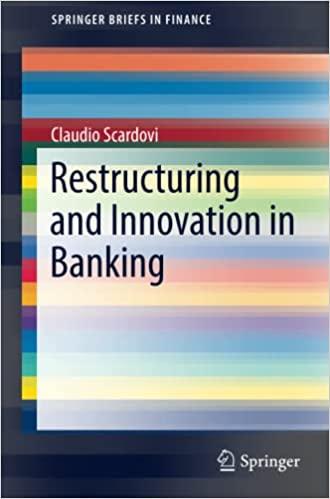Question
1. According to M&M Proposition II without taxes, a firm's cost of equity is a function of the required rate of return on the firm's
1. According to M&M Proposition II without taxes, a firm's cost of equity is a function of the required rate of return on the firm's assets, the firm's debt/equity ratio, and the firm's cost of debt.
True or False
2.
When EBIT is positive, high leverage decreases the returns to shareholders (as measured by ROE).
true or false
3.
All else the same, taxes and bankruptcy claims on the cash flows of the firm will tend to increase with decreases in the debt/equity ratio?
true or false
4.
When EBIT is positive, the effect of financial leverage depends on the company's EBIT, that is, leverage is unfavourable when EBIT is relatively high, and leverage is favourable when EBIT is relatively low.
True or False
true or false
Step by Step Solution
There are 3 Steps involved in it
Step: 1

Get Instant Access to Expert-Tailored Solutions
See step-by-step solutions with expert insights and AI powered tools for academic success
Step: 2

Step: 3

Ace Your Homework with AI
Get the answers you need in no time with our AI-driven, step-by-step assistance
Get Started


